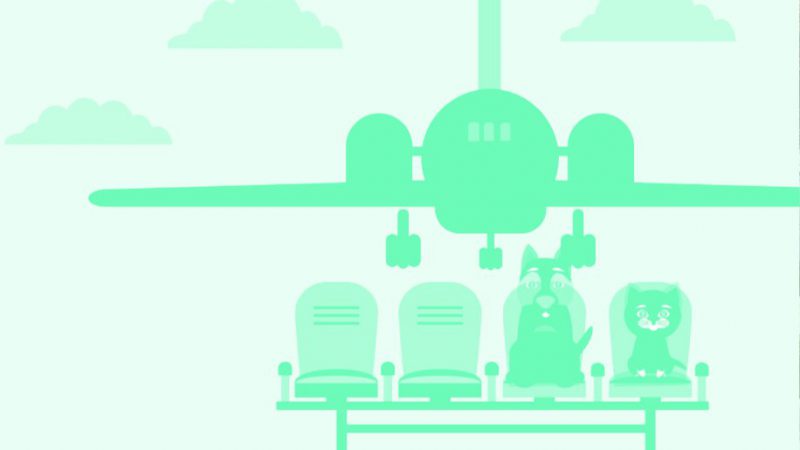When Pigs (And Other Critters) Fly7
New rules are coming for animals on board aircraft
February 28, 2020


The question of pets on planes – especially emotional support animals, or ESAs – has become an increasingly contentious issue as the number and variety of creatures flying has boomed in the past few years. According to industry trade association Airlines For America, 751,000 ESAs boarded commercial flights in 2017, up from 481,000 in 2016, a 74 percent jump.
Emotional support animals are not to be confused with service animals, which are specially trained do work or perform tasks for people with disabilities. The Americans with Disabilities Act requires airlines to allow service animals to fly free.
Like service animals, many ESAs legitimately provide much-needed solace to the individuals they serve. As a result, airlines have generally maintained liberal rules for support animals, allowing cats, dogs, even monkeys to hitch a free ride in the cabin.
Unfortunately, ESAs have become somewhat problematic for the airlines, for cabin crews and fellow passengers – especially those with severe allergies to animals. Certainly some of the spike in flying pets can be attributed to travelers who choose the dodge the additional cost of taking Fido on vacation, claiming he provides them with “emotional support.”
The consequence has been a spate of headlines ranging from the outlandish (the woman whose “emotional support” peacock was denied boarding at Newark airport) to the downright dangerous (a passenger mauled by an untrained support dog in San Diego).
Now the Department of Transportation has stepped in with a proposed set of new rules for the transportation of service animals by air. The new regulations would better serve fliers with disabilities and make it harder for those who just love traveling with their pets to bring them onboard.
In the Notice of Proposed Rulemaking, some of the proposed new rules would:
• Define a service animal as a dog that is individually trained to do work or perform tasks for the benefit of a person with a disability.
• No longer consider an emotional support animal to be a service animal
• Consider a psychiatric service animal to be a service animal and require the same training and treatment
• Allow airlines to require forms attesting to the service animal’s good behavior and good health
Naturally, there are more to these proposed rules, but they’re intended mainly to narrow the definition of a service animal and exclude emotional support animals from the ‘free ride’ category. The rules are available to review at transportation.gov. The public has until mid-March to comment on the proposed changes.
So all of this is not to say Mittens and Rover need to stay at home, pining for their humans to return. Indeed, many carriers welcome pets under the right conditions – and for a fee – but the rules vary wildly from airline to airline. The Federal Aviation Administration has some general guidelines about carrying pets on planes at faa.gov. And there’s a handy website, pettravel.com, that comes with a drop-down menu of 160 different airlines and their rules for traveling with your pet.
Of course, they recommend contacting your carrier directly to get the most up-to-date regulations specific to that airline.




